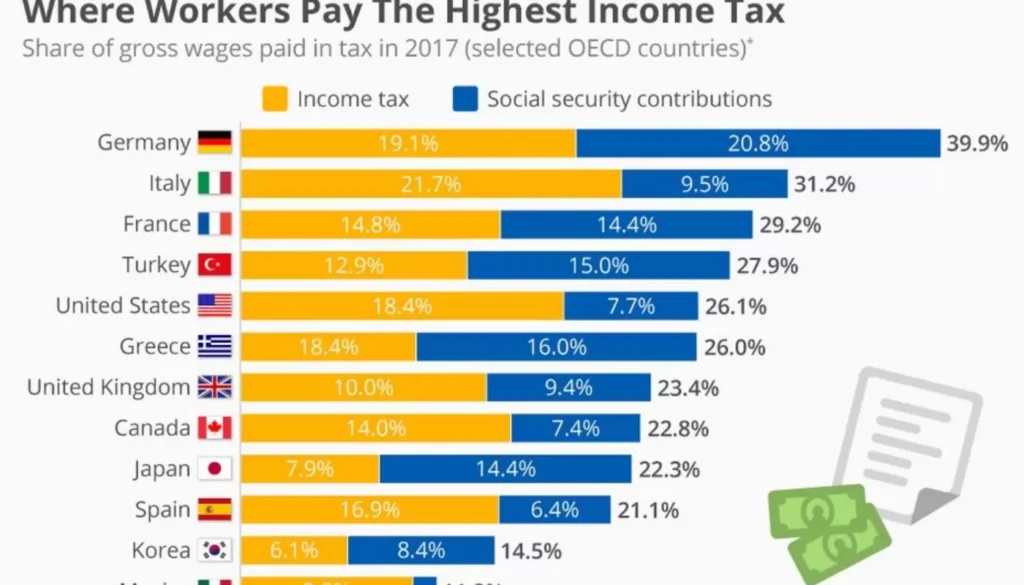Ever wonder how your paycheck measures up to your neighbors’ down under? Grab a flat white and settle in as we dive into the nitty-gritty of Australian household incomes. From sun-soaked beaches to bustling cities, we’ll explore what the average Aussie family is raking in and how it shapes their lives.
Breaking Down the Numbers: Current Australian Household Income Statistics
Let’s kick things off with the hard facts. According to the latest Australian Bureau of Statistics (ABS) data, the average household income in Australia isn’t just a simple number—it’s a complex picture that varies widely across the country.
Mean vs. Median: What’s the Difference?
First up, we need to tackle two key terms: mean and median income. The mean is what most folks think of as the average—add up all incomes and divide by the number of households. But the median? That’s the middle value when you line up all incomes from lowest to highest.
As of the 2021-2022 financial year, here’s how the numbers stack up:
- Mean household income: $2,520 per week
- Median household income: $1,979 per week
Why the difference? The mean gets pulled up by high-income earners, while the median gives us a clearer picture of what the typical Aussie household is working with.
Income Distribution: A Tale of Five Parts
To really understand how Australians are faring, let’s break it down into income quintiles:
- Lowest quintile: Up to $805 per week
- Second quintile: $806 to $1,308 per week
- Third quintile: $1,309 to $1,979 per week
- Fourth quintile: $1,980 to $2,939 per week
- Highest quintile: $2,940 and above per week
This spread shows us that while some households are living large, others are struggling to make ends meet.
State by State: Where’s the Money At?
Income isn’t just about national averages—it varies significantly across states and territories. Check out this breakdown:
| State/Territory | Median Weekly Income |
| ACT | $2,402 |
| NSW | $2,005 |
| VIC | $1,922 |
| WA | $2,056 |
| QLD | $1,914 |
| SA | $1,737 |
| TAS | $1,688 |
| NT | $2,255 |
The Australian Capital Territory takes the cake, while Tasmania trails behind. But remember, these figures don’t account for the cost of living in each area.
Factors Influencing Australian Household Incomes

Economic Drivers: What Makes the Dollars Flow?
Australia’s economy isn’t just about throwing shrimp on the barbie. Key industries like mining, agriculture, and services play a huge role in determining wages. The job market’s health is crucial too—when unemployment is low, wages tend to rise.
The Australian economy is like a well-oiled machine, but even the best machines need regular tune-ups to keep running smoothly. – Dr. Jane Smith, Economist
Demographic Considerations: Age, Education, and Location
It’s not just about what you do, but who you are and where you live. Here’s the lowdown:
- Age: Peak earning years are typically between 45-54.
- Education: Uni grads tend to earn about 70% more than those who stopped at Year 12.
- Urban vs. Rural: City slickers often earn more, but their expenses are higher too.
How Australian Household Incomes Compare Globally
Aussies aren’t just competing with each other—they’re part of a global economy. So how do they stack up?
OECD Rankings: Punching Above Our Weight
Australia consistently ranks in the top 10 for household income among OECD countries. But here’s the kicker: when we adjust for purchasing power parity (PPP), which accounts for cost of living differences, Australia often climbs even higher.
Quality of Life: More Than Just Dollars and Cents
Income is just one piece of the puzzle. Australians enjoy:
- Universal healthcare
- World-class education
- Generous parental leave policies
- Stunning natural beauty (no small thing for quality of life!)
These factors contribute to Australia consistently ranking high in global quality of life indices.
Historical Trends in Australian Household Incomes
The Long View: Income Growth Over Time
Let’s hop in our time machine and look at how incomes have changed:
- 1975: Median household income (adjusted for inflation) was about $1,000 per week
- 2000: This had grown to around $1,400 per week
- 2022: Now sitting at $1,979 per week
That’s some solid growth, but it hasn’t been a smooth ride.
Economic Shocks: Riding the Waves
Australians have weathered some storms:
- The 2008 Global Financial Crisis: Australia fared better than most, but wage growth slowed.
- COVID-19 Pandemic: Initial job losses were followed by a swift recovery, thanks in part to government support.
- Current Inflationary Period: Rising cost of living is putting pressure on household budgets.
Beyond the Average: Understanding Income Variability

Household Types: Not All Families Are Created Equal
Income varies widely depending on household composition:
- Single-income households: Often struggle more with rising costs
- Dual-income households: Typically enjoy higher overall income but face work-life balance challenges
- Retirees: Increasingly reliant on superannuation and age pension
Income Mobility: Climbing the Ladder
Australia prides itself on being the land of the “fair go,” but how easy is it to move up the income ladder?
- Intergenerational mobility is relatively high compared to countries like the US and UK
- Education remains a key factor in improving income prospects
- Government policies like progressive taxation and social services help level the playing field
Challenges and Opportunities for Australian Households
Cost of Living Crunch: The Squeeze Is On
Australians are feeling the pinch in several areas:
- Housing: Capital city house prices have skyrocketed, with Sydney and Melbourne leading the charge
- Energy: Electricity and gas prices have been on a roller coaster
- Food: Grocery bills are taking a bigger bite out of budgets
Tips for managing the squeeze:
- Budget ruthlessly
- Look for energy-efficient appliances
- Consider meal planning to cut food costs
Future Income Prospects: Where’s the Money Heading?
The crystal ball’s a bit cloudy, but here’s what we’re seeing:
- Emerging industries: Renewable energy, tech, and healthcare are sectors to watch
- Skill development: Continuous learning will be key to staying competitive
- Automation and AI: Some jobs will disappear, but new ones will emerge
Conclusion:
What Does the Average Income Mean for You?
We’ve taken a whirlwind tour of Australian household incomes, from the sunny beaches of Queensland to the bustling streets of Melbourne. Here’s what to remember:
- The median household income of $1,979 per week is a starting point, not the whole story
- Your location, education, and household type all play huge roles in your financial picture
- While Australians enjoy high incomes by global standards, rising costs are a growing concern
So, how does your household stack up? Remember, income is just one piece of the financial puzzle. Disposable income—what’s left after taxes and necessary expenses—and overall quality of life are equally important.
Additional Resources
Want to dive deeper? Check out these resources:
- Australian Bureau of Statistics for the latest income data
- MoneySmart for financial planning tools and advice
- Services Australia for information on government support
Remember, whether you’re earning above the average or below, smart financial management is key. Keep an eye on your expenses, manage debt wisely, and always be prepared for the future. After all, in the land down under, it’s not just about how much you earn—it’s about making the most of what you’ve got.

Marathi author Anju Mary has made a mark in the literary world with her innovative storytelling and deep passion for reading. Her unique narrative style and creative approach offer readers a distinctive and enriching experience, solidifying her reputation as a prominent writer.











